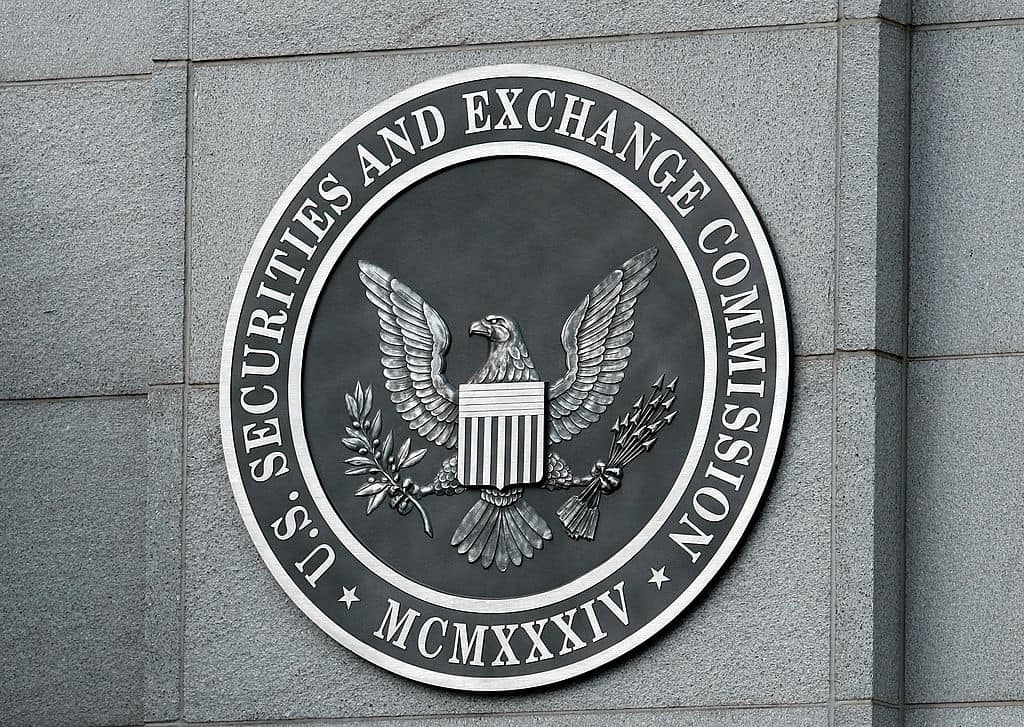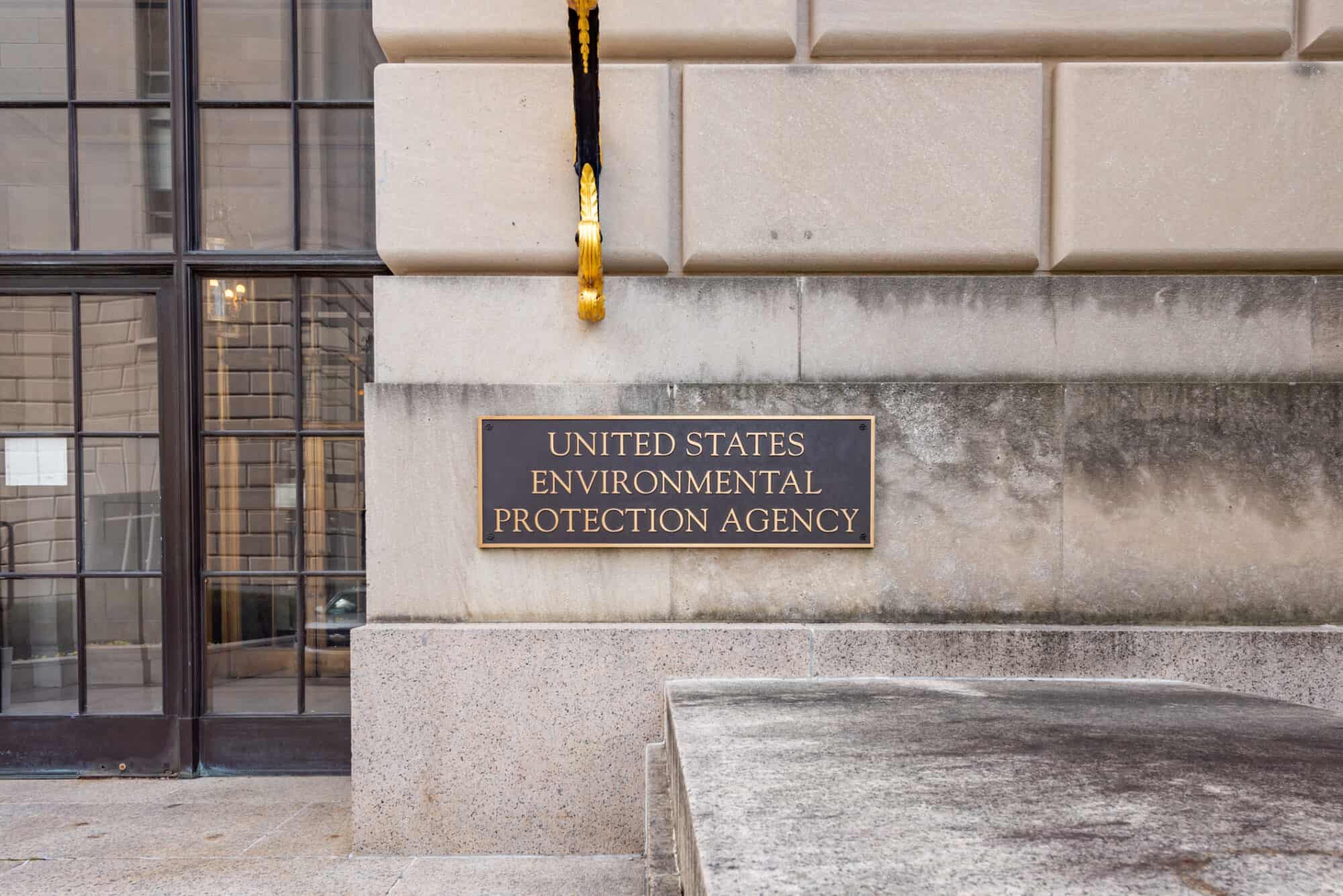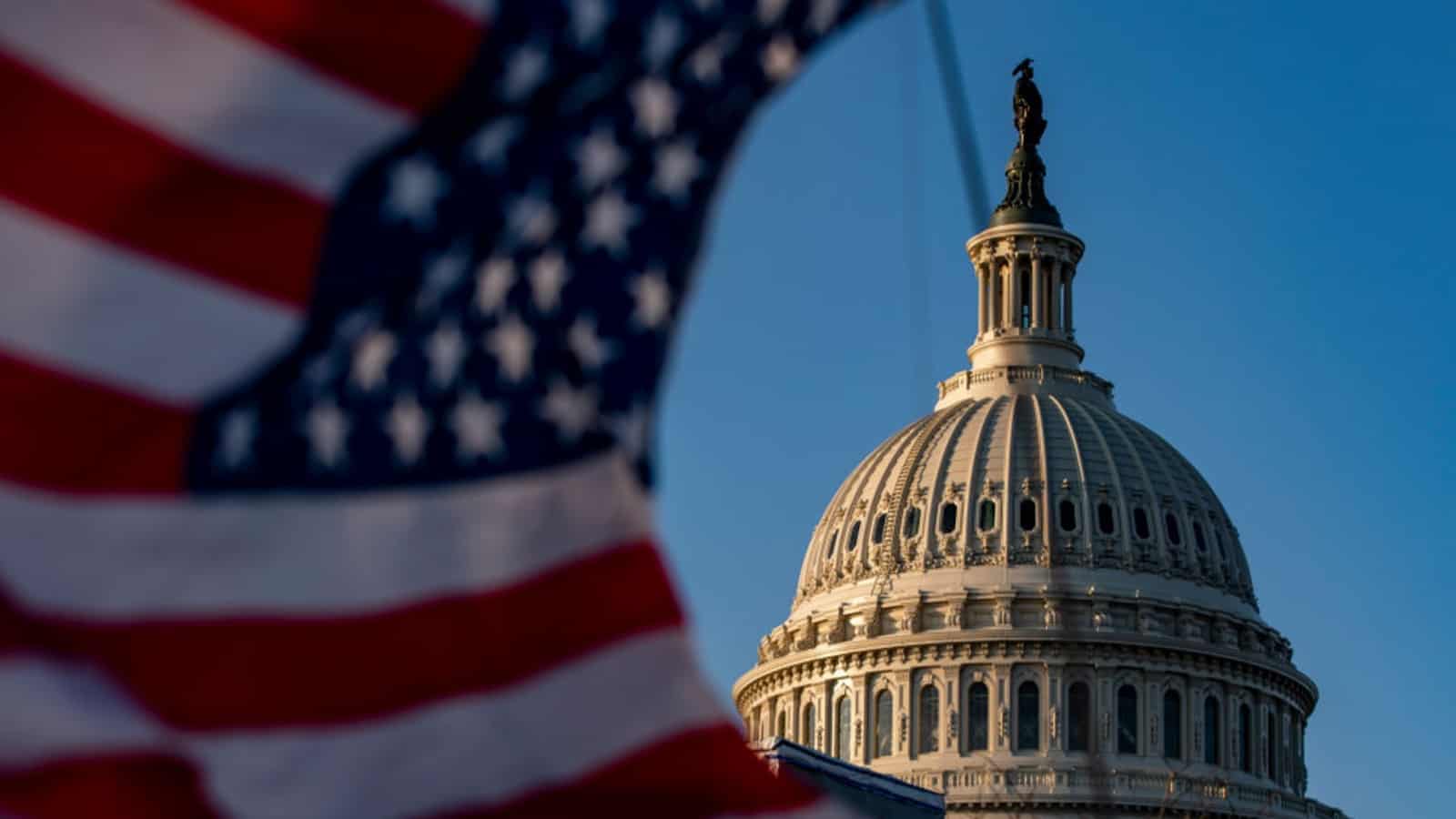Manufacturing Front and Center in State of the Union Address
But Biden Misses Marks with Attack on Sector
Washington, D.C. – Following President Biden’s State of the Union address, National Association of Manufacturers President and CEO Jay Timmons released the following statement:
“Tonight, President Biden celebrated manufacturing’s accomplishments during his presidency, and rightly so. He signed into law some of the most consequential pro-manufacturing legislation in recent years—the Bipartisan Infrastructure Law, the CHIPS and Science Act and even key provisions of the Inflation Reduction Act. What’s more, manufacturers have stood proudly with him in his efforts to champion democracy abroad, most notably in Ukraine, and to reach solutions to address our broken immigration system. These are urgent priorities on which Congress should heed his call and act swiftly.
“But President Biden missed the mark tonight in several key areas when he laid out his plans going forward. If the cost of manufacturing in America is driven up by his agencies’ continued regulatory onslaught and a successful push to raise taxes, investment will be driven overseas and Americans will be driven out of work. If his campaign to ‘march-in’ to manufacturers and seize their intellectual property advances, it will rob Americans and the world of future cures and chill research into new breakthroughs across the manufacturing industry. And if President Biden continues to heap blame on pharmaceutical manufacturers, rather than reining in pharmacy benefit managers with cost-saving reforms, Americans and their employers will continue to endure rising health care costs.
“President Biden and Congress have a choice to make: they can take bipartisan action on the priorities manufacturers have outlined in our ‘Competing to Win’ agenda, an agenda that will unquestionably lift the quality of life for all Americans, or they can retreat to partisan corners and put our future in jeopardy.
“The president spoke passionately tonight about protecting democracy and our way of life at home and around the world. Manufacturers share a profound commitment to democracy and to the values that have made America exceptional and keep manufacturing strong—free enterprise, competitiveness, individual liberty and equal opportunity. And one of the surest ways to restore faith in democracy is for both parties to work together and prove that this experiment still works—by delivering smart policies for the American people and by bolstering the industry that is the backbone of our economy and improves lives for all.”
-NAM-
The National Association of Manufacturers is the largest manufacturing association in the United States, representing small and large manufacturers in every industrial sector and in all 50 states. Manufacturing employs nearly 13 million men and women, contributes $2.85 trillion to the U.S. economy annually and accounts for 53% of private-sector research and development. The NAM is the powerful voice of the manufacturing community and the leading advocate for a policy agenda that helps manufacturers compete in the global economy and create jobs across the United States. For more information about the NAM or to follow us on Twitter and Facebook, please visit www.nam.org.
SEC Finalizes Scaled-Back Climate Rule

The Securities and Exchange Commission has approved new climate disclosure requirements that have been in the works for the past two years. Changes made to the rule represent progress for manufacturers—though the industry will still face new cost burdens, the NAM said Wednesday night.
What’s going on: The SEC voted Wednesday in favor of requiring public companies to disclose greenhouse gas emissions and other climate-related information. Thanks in part to ongoing NAM advocacy—which Law360 (subscription) covered this week—the agency dropped its onerous, unworkable Scope 3 emissions mandate.
- That provision would have forced public companies to divulge information about emissions coming from anywhere in their supply chains—including from small and family-owned businesses.
Heeding the NAM: “The NAM demonstrated for the SEC the practical realities of such a sweeping proposed rule, encouraging the SEC to make significant changes to remove inflexible and infeasible mandates, require disclosure only of material information and protect small manufacturers from the impact of these requirements,” NAM President and CEO Jay Timmons said following the vote.
Key changes: In addition to the Scope 3 change, the SEC exempted smaller public companies from Scope 1 and Scope 2 emissions reporting and delayed the rule’s effective dates. The final rule also is more narrowly focused on so-called “material” information (data investors need to make informed decisions) than what had been proposed previously.
Keeping a close watch: The final rule “remains imperfect,” Timmons continued. “[A]nd it remains to be seen whether the rule in its entirety is workable for manufacturers.”
- “The NAM remains committed to ensuring the SEC acts within its statutory authority, prioritizes flexibility and provides much-needed guidance—just as we are committed to providing leadership in addressing environmental challenges. This is why the NAM is keeping all options on the table as we evaluate the rule’s potential impacts on the manufacturing sector.”
NAM, Allies File Suit Against EPA Over Air Standard

The NAM and seven association partners have filed suit against the Environmental Protection Agency to challenge the office’s overly stringent, recently finalized rule on particulate matter, or PM2.5, the NAM said Wednesday.
What’s going on: The eight groups filed suit in the D.C. Circuit to push back on the EPA’s National Ambient Air Quality Standards rule, which last month it lowered from 12 micrograms per cubic meter of air to 9, a 25% reduction and a stifling burden on manufacturers, the NAM said.
- “In pursuing this discretionary reconsideration rule, the EPA should have considered the tremendous costs and burdens of a lower PM2.5 standard,” said NAM Chief Legal Officer Linda Kelly. “Instead, by plowing ahead with a new standard, the agency not only departs significantly from the traditional NAAQS process, but also gravely undermines the Biden administration’s manufacturing agenda—stifling manufacturing investment, infrastructure development and job creation in communities across the country.”
- Participating in the suit with the NAM—which has repeatedly urged the EPA against overtightening the standard—are the American Chemistry Council, the American Forest & Paper Association, the American Petroleum Institute, the American Wood Council, the U.S. Chamber of Commerce, the National Mining Association and the Portland Cement Association.
Why it’s important: If it’s enacted, the stricter PM2.5 standard would cost businesses and the U.S. economy huge sums, hampering company operations and job growth and forcing tough choices on states and towns nationwide.
- The total cost of complying with the new acceptable concentration level could be as much as $1.8 billion, according to the EPA’s own estimates—and that number could go up.
- What’s more, it would make the U.S. less competitive globally. “Europe’s current PM standard is 25; China’s is 35,” NAM Managing Vice President of Policy Chris Netram told the House Energy and Commerce Subcommittee on Environment, Manufacturing and Critical Materials last month. “If we want the next manufacturing dollar to be spent in America rather than abroad, a standard of 9 is simply not feasible.”
NAM in the news: The New York Times (subscription) covered the lawsuit.
Worst-Case Scenario Avoided, SEC Scales Back Climate Rule in Response to Manufacturers’ Concerns
Washington, D.C. – Following the release of the Securities and Exchange Commission’s final rule instituting new climate disclosure requirements for public companies, National Association of Manufacturers President and CEO Jay Timmons released the following statement:
“Nearly two years ago, the SEC proposed an overreaching, unworkable climate disclosure mandate that would have curtailed manufacturers’ ability to invest in our communities and hire workers our sector desperately needs—by imposing tremendous compliance costs that would have spread beyond public companies to manufacturers of all sizes, especially small and family-owned businesses.
“The NAM demonstrated for the SEC the practical realities of such a sweeping proposed rule, encouraging the SEC to make significant changes to remove inflexible and infeasible mandates, require disclosure only of material information and protect small manufacturers from the impact of these requirements. Among other critical issues, the NAM called on the SEC to remove the rule’s onerous and unworkable Scope 3 supply chain emissions reporting mandate—which the SEC has now done.
“The NAM appreciates that the SEC listened to manufacturers across the country who raised their voices back at home, in the halls of Congress and directly with the SEC.
“Still, this rule remains imperfect, and it remains to be seen whether the rule in its entirety is workable for manufacturers. It will impose new burdens on publicly traded companies, at a time when manufacturers already face regulatory costs exceeding $350 billion every year, and it will take considerable time for manufacturers to understand the new reporting requirements and fully come into compliance.
“The NAM remains committed to ensuring the SEC acts within its statutory authority, prioritizes flexibility and provides much-needed guidance—just as we are committed to providing leadership in addressing environmental challenges. This is why the NAM is keeping all options on the table as we evaluate the rule’s potential impacts on the manufacturing sector.”
-NAM-
The National Association of Manufacturers is the largest manufacturing association in the United States, representing small and large manufacturers in every industrial sector and in all 50 states. Manufacturing employs nearly 13 million men and women, contributes $2.85 trillion to the U.S. economy annually and accounts for 53% of private-sector research and development. The NAM is the powerful voice of the manufacturing community and the leading advocate for a policy agenda that helps manufacturers compete in the global economy and create jobs across the United States. For more information about the NAM or to follow us on Twitter and Facebook, please visit www.nam.org.
Manufacturers Challenge EPA’s Untenable Air Standard in Court
The NAM Legal Center has sued to block the rule
Washington, D.C. – Today, the National Association of Manufacturers joined a coalition of other major business trade associations to file suit in the D.C. Circuit to challenge the Environmental Protection Agency’s misguided final rule lowering the National Ambient Air Quality Standards for fine particulate matter (PM2.5) to 9 micrograms per cubic meter.
The EPA finalized this provision—a 25% reduction from the current standard effective on a truncated timeline of 60 days—outside of the Clean Air Act’s normal five-year review cycle, becoming the first administration to redo a promulgated NAAQS.
“In pursuing this discretionary reconsideration rule, the EPA should have considered the tremendous costs and burdens of a lower PM2.5 standard,” said NAM Chief Legal Officer Linda Kelly. “Instead, by plowing ahead with a new standard that is vastly more restrictive than any other national standard, including that set by the EU, the agency not only departs significantly from the traditional NAAQS process, but also gravely undermines the Biden administration’s manufacturing agenda—stifling manufacturing investment, infrastructure development and job creation in communities across the country. The NAM Legal Center is filing suit to protect manufacturers’ ability to obtain permits, expand facilities and pursue long-term investment plans, and defend our country’s competitive advantage.”
Background:
- The Clean Air Act requires the EPA to review the NAAQS every five years to determine whether the PM2.5 standard should be retained or revised. The EPA’s revised standard was done in an out-of-cycle reconsideration.
- In December 2020, following a complete review of the PM NAAQS, the EPA decided to retain the PM2.5 standard of 12 micrograms per cubic meter. But in June 2021, the agency announced it would reconsider that decision.
- The NAM submitted comments urging the EPA to maintain the existing standard. The EPA recently reported that PM2.5 concentrations have declined by 42% since 2000, driven by major emissions reductions from both mobile sources and the power sector.
- Notably, the EU standard is currently 25, and a proposal there would be to reach 10 by 2030. The UK has a target of 10 by 2040.
- The EPA itself says that some 70% of particulate matter comes from nonmanufacturing sources, such as wildfires (29%), agriculture and prescribed fires (15%), crop and livestock dust (12%), unpaved road dust (10%), paved road dust (3%) and “dust” (2%).
-NAM-
The National Association of Manufacturers is the largest manufacturing association in the United States, representing small and large manufacturers in every industrial sector and in all 50 states. Manufacturing employs nearly 13 million men and women, contributes $2.85 trillion to the U.S. economy annually and accounts for 53% of private-sector research and development. The NAM is the powerful voice of the manufacturing community and the leading advocate for a policy agenda that helps manufacturers compete in the global economy and create jobs across the United States. For more information about the NAM or to follow us on Twitter and Facebook, please visit www.nam.org.
Previewing the State of the Union

With President Biden set to deliver the State of the Union address Thursday, manufacturing is likely to be in the spotlight once again. At the NAM, we will be listening closely for our key priorities—those that have been achieved and those still in progress.
Promises kept: President Biden has been a partner on a range of issues that are key to manufacturers across the United States. We hope he will outline how pro-growth legislation has helped set the stage for manufacturing growth, with industry employment reaching a 15-year high.
- CHIPS Act: The CHIPS and Science Act marked a major push to boost manufacturers’ competitiveness, supporting large and small businesses up and down the supply chain by investing in domestic semiconductor production and funding programs to support the STEM workforce, advanced technology development, excavation of critical minerals, clean energy and more.
- Bipartisan Infrastructure Bill: President Biden secured a bipartisan $1.2 trillion infrastructure bill, a long-sought, major achievement for manufacturers throughout the country, offering transformational upgrades and significant investments in America’s manufacturing capabilities.
- Inflation Reduction Act: Some of the provisions in the Inflation Reduction Act supported manufacturers across the United States, with direct investments and tax credits generating a major increase in manufacturing construction and jobs.
- Ukraine: The Biden administration has been unwavering in its support of Ukraine. The NAM—which in March 2022 passed a unanimous resolution denouncing Russia’s invasion of the country—has kept the pressure on Congress to pass the stalled Ukraine aid bill.
Progress to come: But this progress will be undermined if the Biden administration continues to issue onerous regulations and call for policies that make it harder to innovate, invest and expand in America. The NAM is working hard to push back against items that would harm manufacturers and encourage the president to refrain from pursuing policies that will make us less competitive.
- Taxes: The NAM is pushing back against any new taxes or attempts to increase tax rates on manufacturers, and we are pressing for tax policies that will make it easier to invest in the future—including the “tax trifecta” found in the recently House-passed Tax Relief for American Families and Workers Act. The NAM urges the Senate to approve these business tax provisions quickly.
- Protecting intellectual property: Late last year the administration proposed invoking “march-in” rights to seize the patents of any products it deems too costly—if those innovations were developed in any part with federal dollars. This move, which would open the door to similar actions in other sectors of manufacturing, would undermine manufacturers’ IP rights, disincentivize early-stage entrepreneurship and dissuade capital investment, all of which could jeopardize our ability to develop future cures. This is just one example of how actions that undermine manufacturers’ IP can have dangerous unintended consequences.
- Regulations: Burdensome rules—such as the tighter National Ambient Air Quality Standards from the Environmental Protection Agency and the Department of Energy’s recent freeze of liquefied natural gas export permits—are preventing manufacturers from creating jobs and harming U.S. competitiveness. We need to end the regulatory onslaught and give manufacturers the chance to grow.
- Energy: Manufacturers in America are at the forefront of the planet’s work to reduce emissions and promote sustainable energy. But to be effective, we need to embrace an all-of-the-above energy strategy that uses the fuel we have while developing the tools we need.
- Immigration: Immigration and border security reforms must be a priority for the administration and Congress. Inaction poses significant economic risks—especially at a time when manufacturers have 600,000 open jobs. Manufacturers are leading on bipartisan solutions, like those found in our A Way Forward plan.
The last word: “Our commitment is to work with anyone, and I truly mean anyone, who will put policy—policy that supports people—ahead of politics, personality or process,” said NAM President and CEO Jay Timmons. “Because here’s what I know: Manufacturers are building an incredible future for our country and our world. And we need partners in the federal government who will work with us to reduce burdens on manufacturers and manufacturing workers, rather than creating barriers to our success.”
Learn more: For more information on the state of manufacturing, check out the 2024 NAM State of Manufacturing Address here.
Previewing the SEC’s Climate Rule

For the past two years, the U.S. Securities and Exchange Commission has been considering a rule that would require businesses to report huge amounts of information about companies’ climate-related risks, strategies and impacts. As the SEC prepares to release its final version of the rule this Wednesday, we spoke with NAM Vice President of Domestic Policy Charles Crain about what manufacturers should expect.
The background: In March 2022, the SEC proposed what the NAM has called an overreaching, unworkable and burdensome climate disclosure rule. According to Crain, the initial proposal would have required extensive disclosures as well as invasive tracking procedures to gauge climate impact and emissions throughout companies’ supply chains—significantly increasing costs and liability for manufacturers.
- “The proposal would have had major implications for the entire manufacturing sector, including both large and small public companies—and even privately held businesses throughout manufacturing supply chains,” said Crain. “As proposed, the rule represents a significant threat to manufacturing competitiveness.”
The pushback: In the two years since the rule was first proposed, the NAM has pressed for significant changes—in detailed letters to the SEC, in congressional testimony and in meetings with SEC commissioners and staff.
- “Manufacturers have made it a top priority over the past two years to convince the SEC that they need to change their approach,” said Crain. “The NAM has spent significant time and effort explaining to the SEC why its proposal was unworkable and likely unlawful and illustrating the impact of the rule’s overwhelming cost burden on manufacturers.”
- “But we also offered specific and actionable suggestions to help the agency tailor the rule, make it more workable to manufacturers and bring it back within the SEC’s statutory authority.”
The preview: With the SEC set to publish its final rule tomorrow, Crain says the NAM is keeping an eye on key inflection points, including the following:
- Scope 3 emissions reporting: The proposal’s Scope 3 mandate would require public companies to disclose the emissions of their supply chain partners—including small and family-owned businesses. If Scope 3 is curtailed or absent, that would represent significant progress for manufacturers.
- Financial statement reporting requirements: The NAM will be tracking the degree to which companies are required to incorporate climate information into their financial statements. The NAM called the proposal’s approach to financial statement reporting “unworkable [and] highly burdensome.”
- Materiality: The SEC is only allowed by law to require “material” disclosures—i.e., financial information that allows investors to make informed decisions. Mandates in the final rule that require immaterial disclosures or seek to redefine materiality could exceed the SEC’s legal authority.
- Implementation: The NAM will consider when and how the rule takes effect, and whether the SEC has provided scaled requirements for smaller companies or tailored implementation plans for certain provisions within the rule.
- Small-business impact: The proposal would have harmed small and privately held businesses disproportionately. The SEC must do a better job at protecting these companies in the final rule.
The expectation: Crain says the NAM’s advocacy appears to have made a difference.
- “Recent news reports suggested that some provisions in the rule may have been modified in alignment with the NAM’s suggested changes,” said Crain. “But it remains to be seen whether the final rule, taken as a whole, is actually workable for manufacturers.”
The next step: The NAM’s next moves will depend on the specifics of the final rule—but the conversation is unlikely to end there.
- “The NAM has been clear that a failure to bring the rule back within the agency’s statutory authority could invite legal action. On the other hand, a balanced, workable rule could obviate the need for litigation,” said Crain.
- “Regardless of the exact content of the rule, the NAM is committed to providing resources to our members to help companies understand and comply with any new requirements. We will also continue to engage with the SEC and Congress to address any implementation issues, seek guidance on any unclear provisions and, if necessary, push for changes to the final rule.”
- “As we have for the past two years, the NAM will continue to advocate on manufacturers’ behalf.”
WTO Heeds Manufacturers’ Warnings; Industry Appreciates Biden and Tai’s Leadership
Washington, D.C. – Following the completion of the 13th World Trade Organization ministerial meeting in Abu Dhabi, at which WTO members chose not to expand the agreement on the Trade-Related Aspects of Intellectual Property Rights waiver to include diagnostics and therapeutics, National Association of Manufacturers President and CEO Jay Timmons released the following statement:
“Global leaders at the WTO heard manufacturers’ stark warnings that an expansion of the TRIPS waiver would have endangered manufacturers’ fundamental ability to fight global crises, including COVID-19. Granting this waiver also would have emboldened our global competitors, chipped away at American innovation and jeopardized our ability to fight future diseases. After years of NAM advocacy, this decision represents a major victory for manufacturers—particularly those hard at work developing lifesaving cures and treatments. We appreciate President Biden and Ambassador Tai’s leadership to secure this outcome.”
The NAM led advocacy efforts to alert policymakers to the danger of an expanded TRIPS waiver, weighing in directly with the Biden administration, members of Congress, foreign governments and business organizations and urging Washington to stand with manufacturers. Timmons also took this message directly to WTO Director-General Ngozi Okonjo-Iweala during a March 2023 meeting in Geneva, Switzerland.
“Another welcome action was WTO members’ decision to expand the moratorium on e-commerce tariffs,” Timmons added. “The e-commerce moratorium has enabled the digital economy to flourish, and the NAM urges U.S. trade officials to push for permanently instituting the moratorium at the WTO, so that this critical element of digital commerce doesn’t come with an expiration date.”
-NAM-
The National Association of Manufacturers is the largest manufacturing association in the United States, representing small and large manufacturers in every industrial sector and in all 50 states. Manufacturing employs nearly 13 million men and women, contributes $2.85 trillion to the U.S. economy annually and accounts for 53% of private-sector research and development. The NAM is the powerful voice of the manufacturing community and the leading advocate for a policy agenda that helps manufacturers compete in the global economy and create jobs across the United States. For more information about the NAM or to follow us on Twitter and Facebook, please visit www.nam.org.
DOE, NAM Urge Flexible 45V Rules

The Department of Energy is urging Treasury to loosen proposed rules for the Inflation Reduction Act’s first tax credit—the 45V, or clean hydrogen tax credit, POLITICO Pro (subscription) reports.
- The request is in line with suggestions the NAM made to the Internal Revenue Service—which, with Treasury, set forth the guidance for claiming the credit—earlier this week.
What’s going on: “The Department of Energy is pushing Treasury to relax the rules to give the industry time to embark on a massive expansion, according to three people familiar with the discussions.”
- The 45V was intended as a longer-term accompaniment to the DoE’s $7 billion regional hydrogen hubs program, which agency officials are concerned will be hamstrung if the tax guidance is too stringent, according to the article.
- The credit “will directly impact how much hydrogen the U.S. produces and the financial bottom line for many companies.”
Why it’s important: The 45V is a major pillar of the Biden administration’s climate agenda, which seeks to make low-carbon hydrogen cost-effective enough to help decarbonize various industries, according to E&E News’ ENERGYWIRE (subscription).
The NAM’s view: “If implemented properly, the 45V credit would provide the certainty needed for manufacturers to make investment decisions that encourage further production, transportation and use of clean hydrogen,” NAM Vice President of Domestic Policy Brandon Farris said.
- “However, the NAM is concerned Treasury is considering renewable sourcing provisions regarding incrementality, temporal-matching and deliverability requirements, which would limit the amount of energy sources available to power the hydrogen production process.”
What should be done: To create a workable, fair 45V framework, Treasury and the IRS should do the following:
- Lengthen the three-year time frame for incrementality, the time frame within which new electricity must be put into service.
- Push back to 2032 (at the earliest) the date by which energy projects must match clean electricity and hydrogen production at an hourly level.
- Recognize energy attribute certificates from outside manufacturers’ own regions as capable of delivering electricity or natural gas into the region where the clean hydrogen production is taking place.
- Follow congressional intent and provide a more reasonable process for taxpayers to prove their food stocks are lower in carbon intensity and therefore eligible for the maximum credit.
NAM: Withdraw Administration March-in Framework Now

The Biden administration’s proposed “march-in” framework would be devastating for American innovation and competitiveness and must be withdrawn immediately, according to the NAM.
What’s going on: In December, the administration issued proposed guidelines to enable the government to “march in” and seize manufacturers’ patents if their products were developed in any part with federal dollars.
- But the move—which a bipartisan group of 28 legislators opposed in a letter to the White House last week—would be fundamentally ruinous to manufacturing in the U.S., according to the NAM.
- “Undermining America’s world-leading patent system is a recipe for reduced innovation and significant economic damage, with a disproportionate impact on small manufacturers,” said NAM Vice President of Domestic Policy Charles Crain.
Price controls: The proposal is tantamount to government price controls, the NAM said.
- “If finalized, this threat to innovation would for the first time enable the government to set price controls on products that incorporate [intellectual property] from early-stage federally funded research.”
- “Manufacturers that do not comply with the proposal’s arbitrary and uncertain pricing criteria could see the government march in, seize their IP and license it to a competitor.”
Undoing advancements: Prior to the 1980 enactment of the Bayh-Dole Act, which allowed for the commercialization of federally funded research, groundbreaking discoveries “often remained stuck in the lab, as private-sector entrepreneurs and investors were unwilling to license innovative technologies given the uncertain path to commercialization,” the NAM said.
- “Limiting manufacturers’ ability to commercialize groundbreaking innovation means that early-stage research will remain on the shelf in university labs.”
